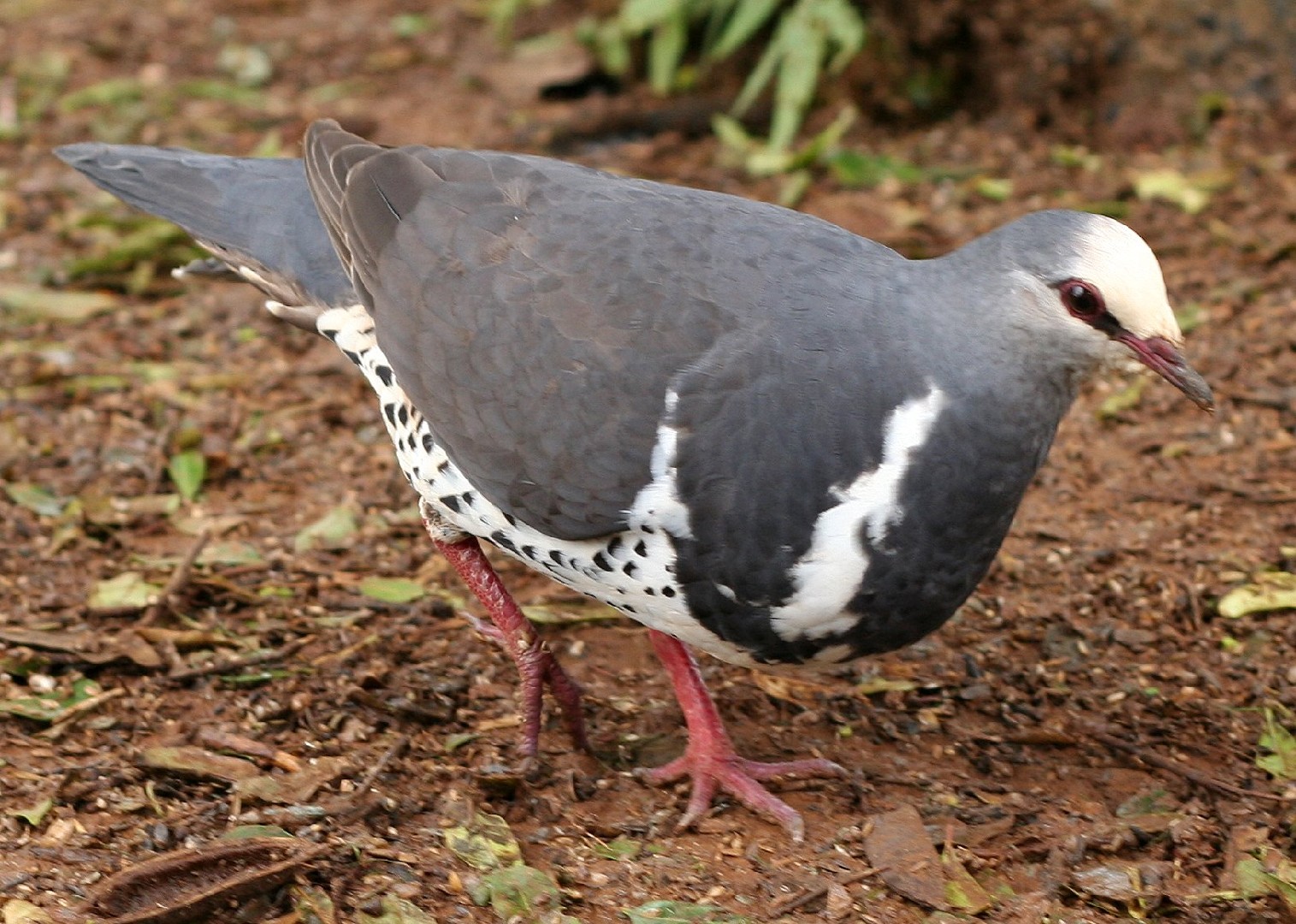Wonga Pigeon
A species of Wonga Pigeon Scientific name : Leucosarcia melanoleuca Genus : Wonga Pigeon
Wonga Pigeon, A species of Wonga Pigeon
Botanical name: Leucosarcia melanoleuca
Genus: Wonga Pigeon
Content
Description People often ask General Info
 Photo By Glen Fergus , used under CC-BY-SA-2.5 /Cropped and compressed from original
Photo By Glen Fergus , used under CC-BY-SA-2.5 /Cropped and compressed from original Description
The wonga pigeon (Leucosarcia melanoleuca) is a pigeon that inhabits areas in eastern Australia with its range being from Central Queensland to Gippsland, eastern Victoria, Australia. Previously they could be found as north as Cairns and as south as the Dandenongs, but due to land clearance, shootings in the 1940s for crop protection, and fox predation, they are rarely seen in these areas, but their populations have improved. The wonga pigeon is a large, plump pigeon that has a short neck, broad wings, and a long tail. Its length varies from 38 to 40 centimetres (15.2 to 16 inches). It has pastel blue-grey back feathers. The head fades to a creamy-white colour. The underside is white with dotted dark grey spots such that a white V can be seen on its chest. Their eyes are a dark red-brown colour and they have pink eye-rings that encircle them. Legs are red and the sexes appear identical but immature pigeons are browner with a less distinct V pattern. They are very elusive birds, more often being heard but not seen, producing explosive wing claps when disturbed. They tend to occur on the ground foraging and are located in rainforests, wet eucalypt forests, coastal forests, picnic areas, walking tracks, car parks and gardens. Their diet consists of fruit, berries, seeds from native forest trees and the odd insect. The call of the wonga pigeon is a loud, high-pitched 'coo' repeated over long periods of time for a number of seconds. When males are displaying mating, bowing occurs with a soft, trilling coo. The wonga pigeon is monogamous and breeds between October and January. It builds a twig platform nest with a diameter of about 30 centimetres, from about 3 to 20 metres above the ground, defended by breeding pairs. The pigeon will sometimes use abandoned nests from topknot pigeons or tawny frogmouths. Two eggs up to 4 centimetres long are normally laid. 
Size
45 cm
Life Expectancy
16 years
Nest Placement
Cavity
Feeding Habits
Wonga Pigeon primarily consumes fruits, seeds, snails, worms, and insects, often foraging on the ground or from low bushes. Utilizing a strong gizzard for digestion, wonga Pigeon may forage solitarily or in small groups, and can be seen scavenging at lyrebird display sites or picnic grounds.
Habitat
The wonga Pigeon inhabits various dense forest types, including temperate and subtropical rainforests, and wet sclerophyll forests, favoring regions with a thick undergrowth for shelter. Preferred environments also feature an open, uncluttered forest floor vital for their ground foraging activities. Additionally, these pigeons can adapt to open woodlands with dense understorey and are often seen in forest clearings and adjacent human-modified landscapes.
Dite type
Herbivorous
People often ask
General Info
Feeding Habits
Bird food type
Bird Feeder Type

Ground
Species Status
Not globally threatened.
Scientific Classification
Phylum
Chordates Class
Birds Order
Pigeons and doves Family
Dove Genus
Wonga Pigeon Species
Wonga Pigeon